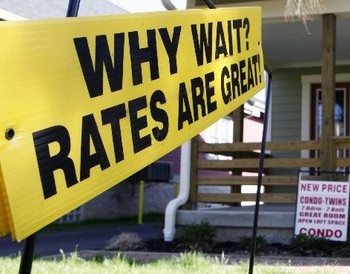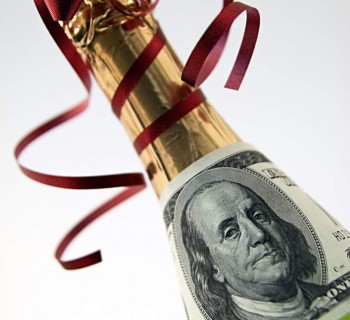 Addressing consumer debt is becoming more difficult with each successive rate hike by the Federal Reserve. While it was not reasonable to assume that interest rates would remain low forever, many consumers have been caught by surprise as rates continue creeping higher. This has been especially problematic due to the increasing levels of overall consumer debt in the United States. According to the Federal Reserve Bank of New York’s Quarterly Report on Household Debt and Credit, total debt is now $618 billion higher than the previous peak of $12.68 trillion which was reached in the third quarter of 2008. From mortgages and student loans to credit cards and auto loans, the projected rate hikes are beginning to create a sense of urgency for those with variable rate debt.
Addressing consumer debt is becoming more difficult with each successive rate hike by the Federal Reserve. While it was not reasonable to assume that interest rates would remain low forever, many consumers have been caught by surprise as rates continue creeping higher. This has been especially problematic due to the increasing levels of overall consumer debt in the United States. According to the Federal Reserve Bank of New York’s Quarterly Report on Household Debt and Credit, total debt is now $618 billion higher than the previous peak of $12.68 trillion which was reached in the third quarter of 2008. From mortgages and student loans to credit cards and auto loans, the projected rate hikes are beginning to create a sense of urgency for those with variable rate debt.
Why are rates moving higher?
The Federal Reserve is bound by a dual mandate – keep inflation around 2 percent and the unemployment rate between 4 and 5 percent. With the core inflation rate creeping higher due to economic growth and the unemployment rate edging lower, the Fed has continued to unwind their accommodating policies. As expected, The Fed raised rates by 25 basis points in September to between 2 and 2.25 percent. This is the third Fed rate hike of the year and the eighth rate hike since they began to raise rates in December of 2015. Federal Reserve projections show expectations for a mid-point of 3.1 percent by the end of 2019 and 3.4 percent in 2020. This would mean that we could expect one more hike this year, three additional increases in 2019 and more to follow in 2020.
Mortgage rates climb
The impact of the Fed’s moves can be felt by borrowers in many ways. While a Fed rate hike does not necessarily mean higher mortgage rates immediately, (mortgage rates are largely based upon the 10-year bond rather than the Federal Funds rate) it is important for borrowers to keep an eye on the Fed’s moves. According to www.Bankrate.com, the benchmark 30-year fixed rate mortgage has increased to nearly 4.92 percent while the average 15-year mortgage rate is near 4.29 percent. Since loan sizes are generally significant, even a small move in mortgage interest rates can make a huge difference in the overall long-term cost of the loan.
Home equity lines of credit are another important rate for consumers to monitor. Since they are generally adjustable rates that are based upon the Prime Rate, interest costs are increasing dramatically. Unfortunately, many borrowers fail to keep an eye on the rate they are being charged. While the Prime Rate was previously as low as 3.25 percent, it now stands at 5% and is expected to climb higher. As recent as 2006, the Prime Rate was as high as 8.25 percent. Homeowners that are carrying high balances on their HELOCs should consider developing a game plan to address the debt before rates move higher. Is the plan to pay off the loan in the next 1-2 years or will the balance be carried for the long-term? For homeowners that expect to carry a balance, it may be advisable to consider refinancing or locking their rate to prevent it from moving higher.
Credit card debt
According the Federal Reserve, the average rate on credit cards that are charging interest is 15.32 percent, nearly 2.40 percent higher than rates were in 2013. While credit card rates have largely hoovered between 12 and 16 percent for the last 20 years, many analysts believe that we will remain on the higher end of that range for years to come. While they are becoming harder to come by, a 0 percent balance transfer may still be available to consumers with solid credit so that debt can be consolidated and addressed. Remember, when implementing strategies to eliminate debt, always start by paying off the highest interest debt first.
Student loan debt
With over $1.4 trillion in student loan debt, interest rate moves can impact borrowing costs for many students and parents. Federal student loan interest rates rose for the 2018-19 school year and apply to loans disbursed between July 1, 2018, and July 1, 2019. The interest rate for federal direct undergraduate student loans increased to 5.05%, up from 4.45% in 2017-18. Unsubsidized direct graduate student loan rates rose to 6.60%, up from 6.00%. Rates for PLUS loans, which are used by graduate students and parents, rose to 7.60%, up from 7.00%. Many analysts expect rates to re-set higher in 2019.
Auto loans
Auto rates have also been slowly increasing. However, credit risk is often the overriding factor when determining interest rates. In fact, www.valuepenquin.com notes that the average rate charged on a 60-month auto loan will vary from 3.60 percent for FICO scores of 720-850 to 15 percent for FICO scores of 500-589. Rate hikes will certainly impact rates but credit rating plays a large role too.
Interest rates have been significantly lower than average for many years and many analysts expect future increases. Since rates are still low by historical standards, it is important to take a proactive approach toward addressing any variable rate consumer debt you may have. Since everyone’s situation is unique, consider speaking to your tax, legal and financial adviser to determine the most appropriate approach for you.
Kurt J. Rossi, MBA, CFP®, CRPC®, AIF® is a CERTIFIED FINANCIAL PLANNERtm Practitioner & Wealth Advisor. He can be reached for questions at 732-280-7550, kurt.rossi@Independentwm.com, www.bringyourfinancestolife.com & www.Independentwm.com. LPL Financial Member FINRA/SIPC.








